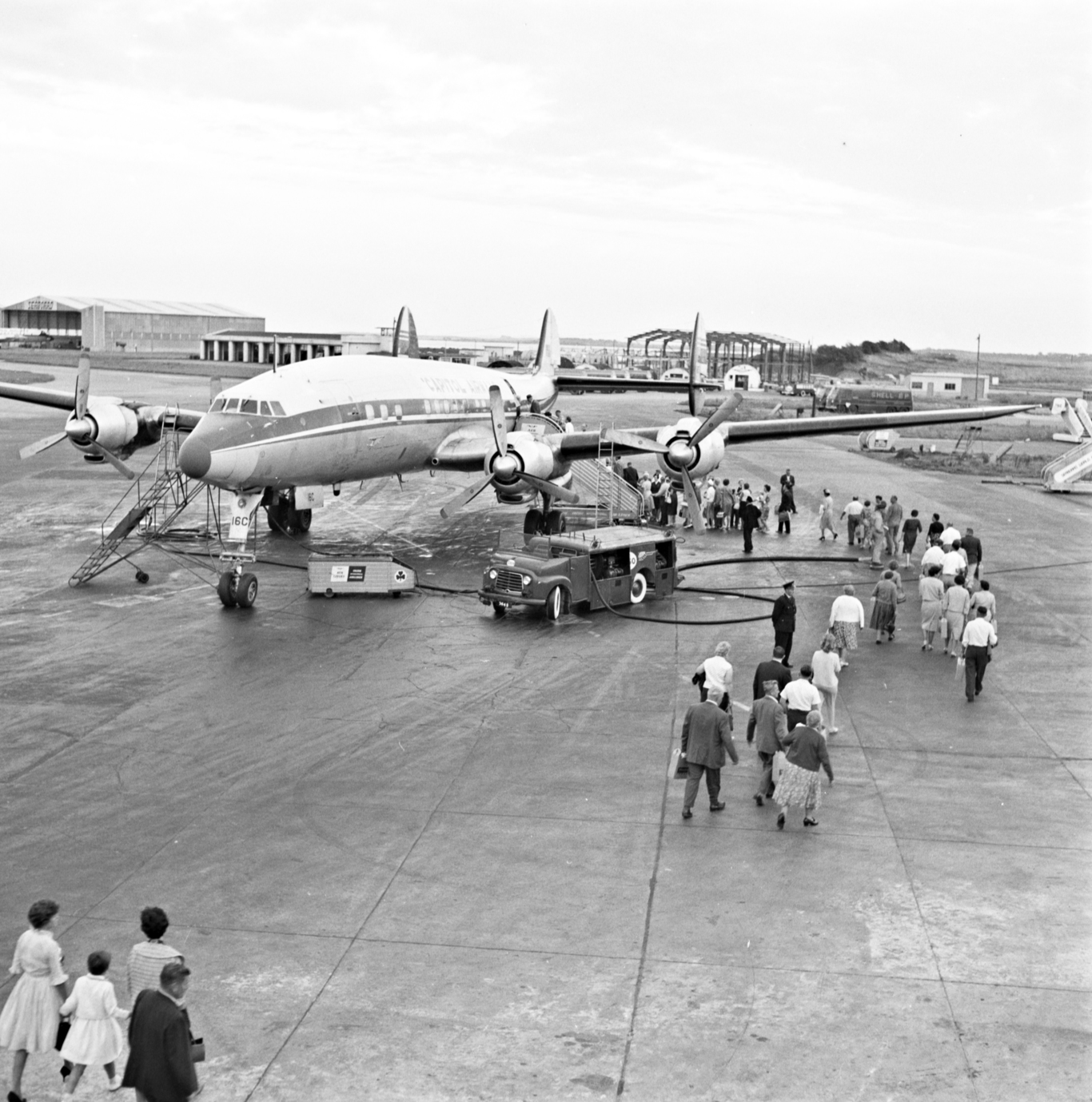7 images that tell the story of iconic Irish business through the decades
Here’s what some of Ireland’s best-known companies looked like back in the day.
MANY OF THE Irish firms that have best stood the test of time came from humble beginnings.
While they have undergone a facelift – or several – over the years, Ryanair didn’t begin life as a well-oiled billion-euro business, and Penneys wasn’t always a household name.
Here at Fora, we’ve put together a short collection of photographs, each of which tells a story about these famous Irish brands:
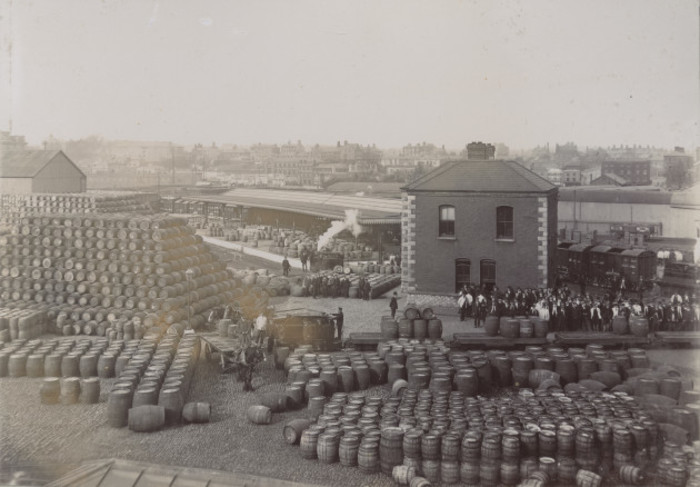
Guinness (1914) – Guinness Storehouse
At the turn of the 20th century, Guinness was just approaching its 150th birthday. In that space of time, it had already become a renowned international brand and grown to be the largest brewery in the world.
The Guinness Storehouse looks a bit more modern now, but the black and white stuff is still brewed there today.
In this photo, you can see the steam coming from one of Guinness’s trains being used to transport barrels towards the River Liffey so they could be shipped on a barge towards O’Connell Street and the Docklands. Those train tracks still exist and line the streets around the storehouse.
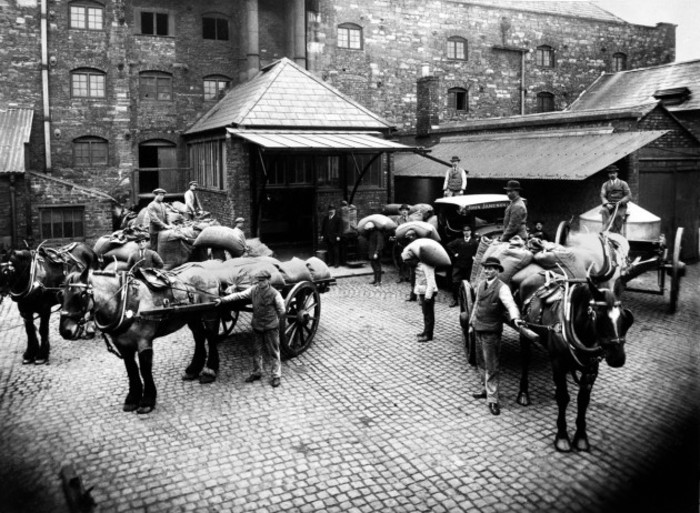
Jameson (circa 1920) – Jameson’s Dublin Distillery
It may be closed at the moment for redevelopment, but back in its heyday, the Jameson Distillery was a serious operation. At the start of the 1880s the Dublin distillery was over five acres in size and horses were used to pull the carts that were full of barrels across Dublin.
In this picture, however, the horses can be seen with carts full of barley being delivered to the distillery for Jameson to work its distilling magic.
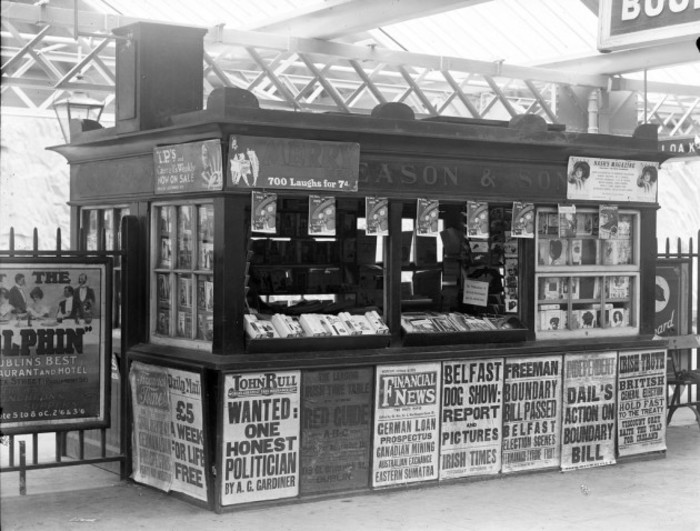
Easons (1924) – Waterford train station
While Easons once had small stalls dotted across the country and was a fixture at many train stations, the company has long since abandoned the stands for its larger book, magazine and stationary outlets.
This image is from Waterford train station and, as the newspaper headlines show, it was taken at a pivotal time in Irish history.
Discussions were being held between the Irish and British governments to decide the boundary between the north and south of the island. But also, the Irish Times had a big report on the Belfast Dog Show. What a time to be alive.
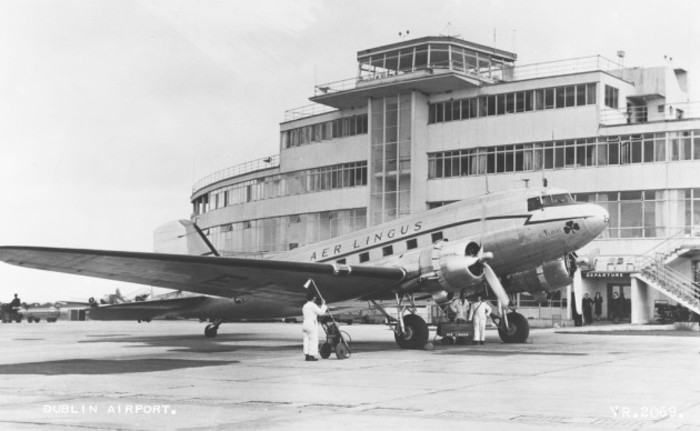
Aer Lingus (circa 1950) – Dublin Airport
Before taking on a fleet of Boeing airplanes, Aer Lingus made do with the classic Douglas DC-3, which revolutionised air travel in the 1930s and 40s and was widely used by the US Navy during the Second World War. They were the first planes to wear the famous silver and green Aer Lingus colours.
The airline was first set up in 1936 and was established as the national carrier in that year. Due to the outbreak of the Second World War, its expansion was curtailed during its formative years until regular service resumed in 1945.
This plane is pictured in front of the original Dublin Airport terminal building, which won design awards for its curved architecture. It was designed by Desmond Fitzgerald, brother of former taoiseach Garret Fitzgerald, who worked at Aer Lingus for a number of years.
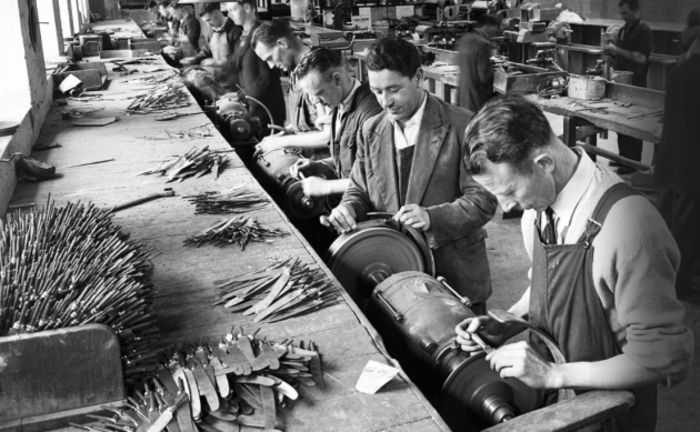
Newbridge Silverware (circa 1950)
Newbridge Silverware wasn’t always the employment linchpin of the Kildare town. Before the company came along in 1934, the factory was home to over 3,000 British troops – and when Ireland gained its independence in 1921, there was a mass exodus.
Concerned that there was now a gaping economic hole in Newbridge, the locals were encouraged by the local government to pick up the metal forging equipment left behind by the army and the Newbridge Cutlery Company was born.
A trade depression during the 1950s threatened to finish the company, which was forced to lay off a large number of staff. The picture above shows factory conditions during that period. Despite some difficult decades, it wasn’t until 1990 for the business to seriously diversify and begin making high-end jewellery.
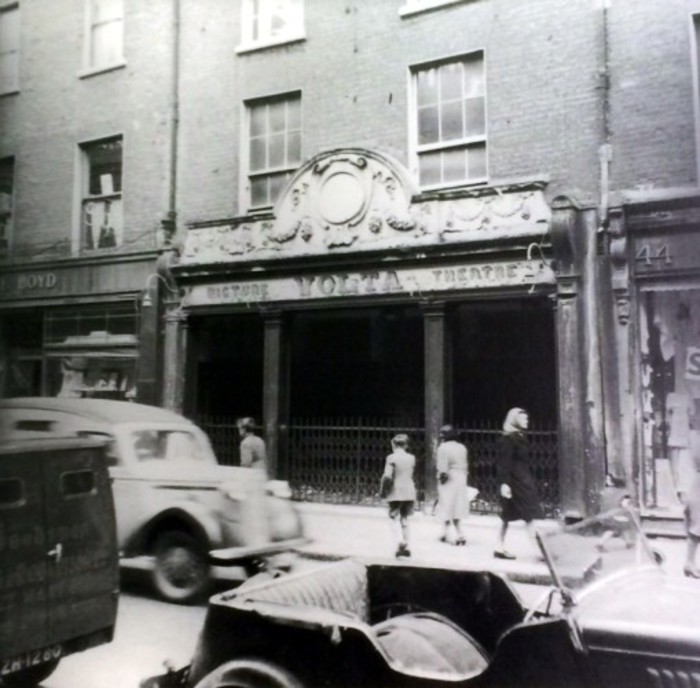
Penneys (circa 1950) – The Volta
This picture shows the former tenant at what became the first Penneys location on Mary Street. The building used to be home to Dublin’s first permanent cinema, known as the Volta, which opened its doors in 1909 and was for a time managed by James Joyce himself.
The cinema, which was the pride of Mary Street enjoyed four decades of trade before shutting down. Some 22 years later, the lot had a new occupant, Penneys. The company’s first store was set up by the Weston family in June of 1969 and it expanded to Belfast two years later.
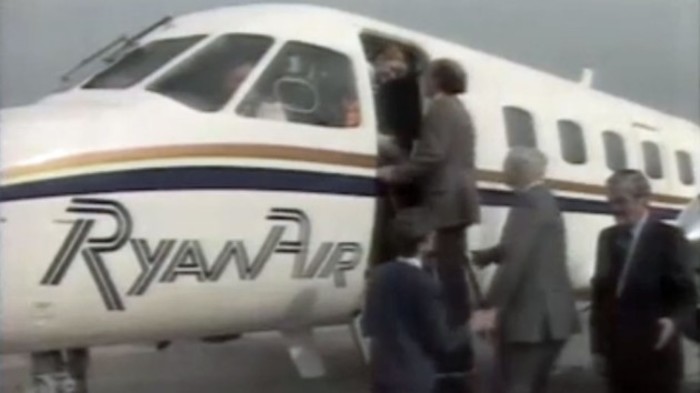
Ryanair (1985) – Waterford Airport
When Ryanair ran its first flight in July 1985 from Waterford to Gatwick Airport in London, nobody predicted how big an effect this little Irish airline would have on air travel.
Fast forward three decades and the company is one of Europe’s busiest carriers, having helped to kick-start the low-cost travel revolution – while also introducing us to that Michael O’Leary character.
The daily trip made by the 15-seater Embraer Bandeirante aircraft to London made Waterford Ireland’s fourth international airport at the time. The service was aimed at businessmen and flights cost £198 return, compared to the £210 charged by other major airlines on the Dublin-to-London route.
